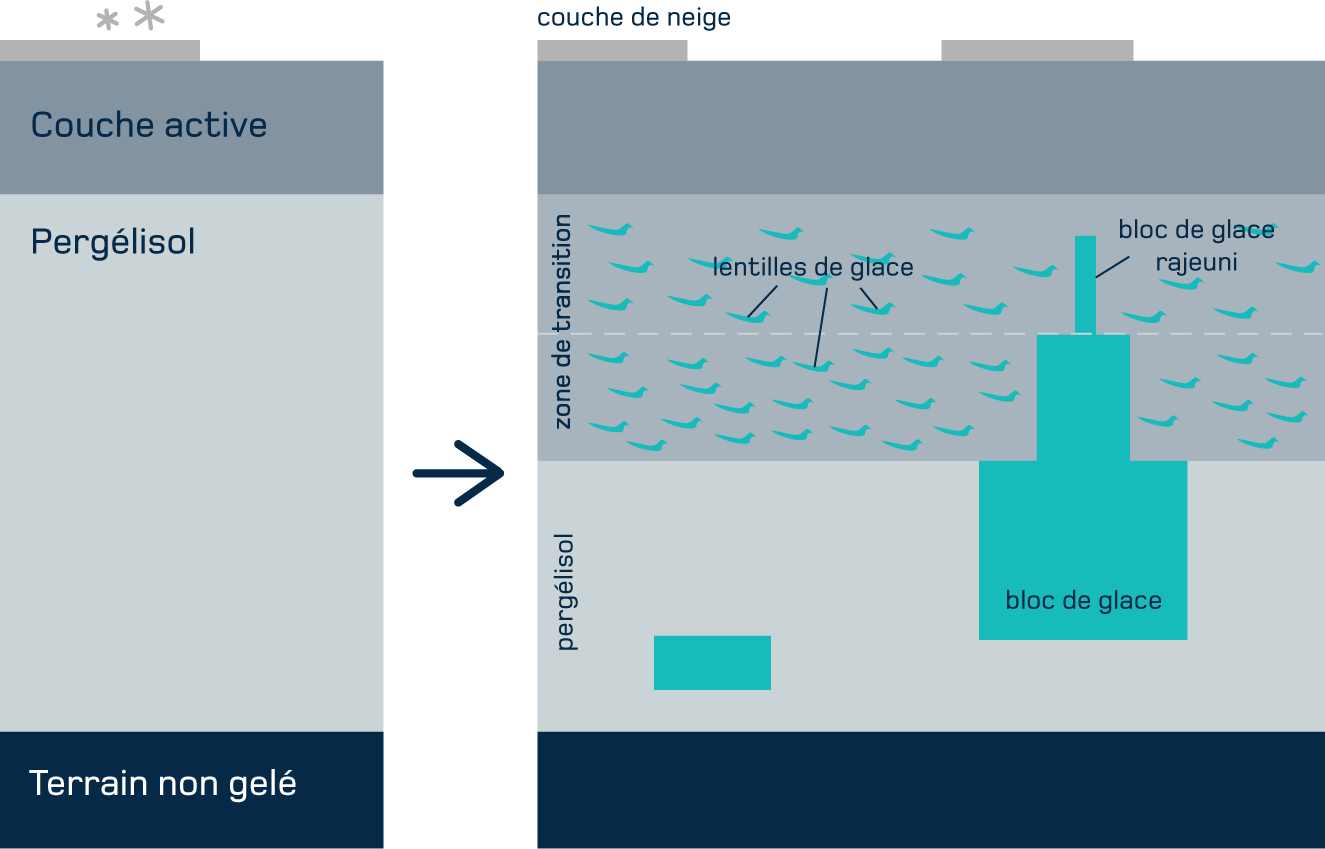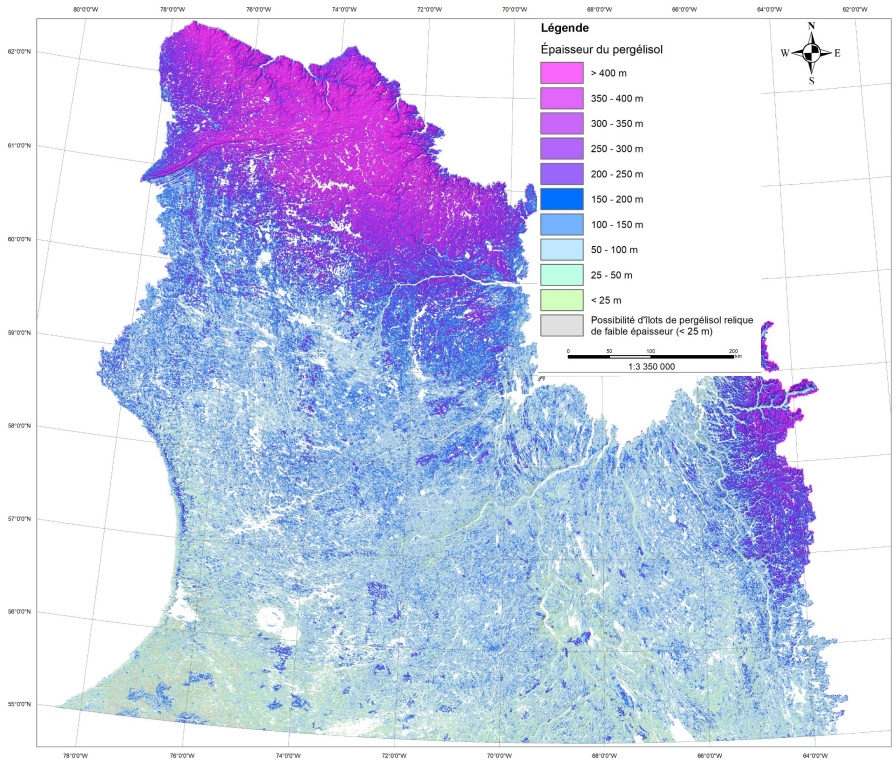Thawing permafrost
About one third of Quebec is covered with permafrost. It is found particularly in the Nunavik region in the north of the province.
Permafrost is divided into two zones, by layer. The first is the active layer, at the surface. Its temperature rises above 0°C every summer. The second zone is deeper. It stays below 0°C for at least two consecutive years.
Unlike rocky areas, permafrost regions where the soil is soft are characterized by the presence of ice lenses. These are generally defined as layers of ice of varying shapes inside the soil, produced when liquid water freezes underground. Ice lenses are important elements in the soil freeze-thaw process and are sensitive to temperature changes.
Permafrost
Permafrost is a layer of soil with a temperature of 0°C or less for at least two consecutive years.

Figure 1 : Representation of the different permafrost layers and ice lenses.
Source : Ouranos, inspired by Schoeneich et al., 2017; Murton et Ballantyne, 2017.
The characteristics and distribution of the permafrost in northern Quebec
The temperature, extent and thickness of permafrost can vary greatly from region to region due to climatic conditions, vegetation cover, snow cover and soil properties. All of these factors contribute to the variation in the permafrost distribution in northern Quebec.
In the extreme north of Quebec, permafrost is omnipresent and very thick, reaching depths of 1500 m. In warmer regions, it appears as thin, insulated plates generally less than 10 m thick.
Figure 2 : Distribution of permafrost categories in Nunavik. (From: Centre d’études nordiques, 2020).

Figure 3 : Map of probable permafrost thicknesses calculated using average upper layer permafrost temperatures in 2000-2016. (From: MFFP, 2018).
Thawing of permafrost
Climate change is leading to rising air temperatures, which are closely linked to soil temperatures. Thus, this warming causes heat to penetrate deeper into the ground, resulting in melting of ice lenses and thickening of the active layer in northern Quebec. The permafrost is warming or even thawing, resulting in settling, collapse and land movements affecting ecosystems, infrastructure and northern communities.
Three categories of permafrost
Continuous permafrost occupies 80% of the soil. It is found in northern regions at very high latitudes, where it is very cold. In these areas, it remains frozen for at least two consecutive years. In Quebec, it is found in far northern Nunavik.
Discontinuous permafrost corresponds to areas where the soil is partially frozen, with a 30% to 80% proportion of frozen ground. It is generally at a lower latitude than continuous permafrost.
Sporadic permafrost occupies less than 30% of the soil. It is generally located further south than the other permafrost categories, due to the warmer climate. Its distribution varies greatly with latitude.